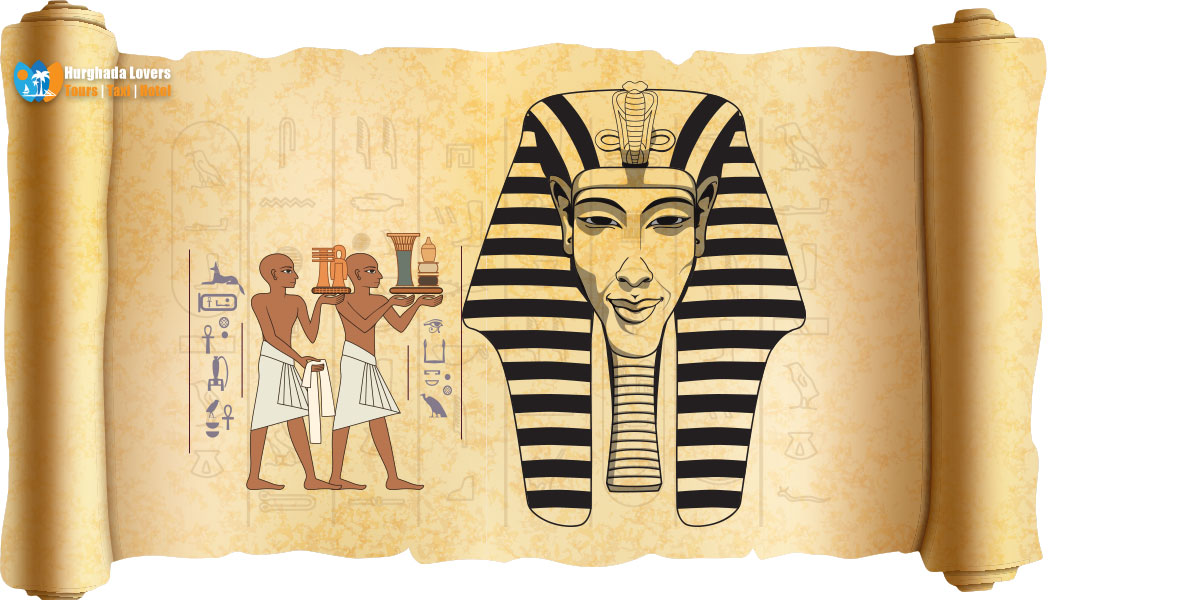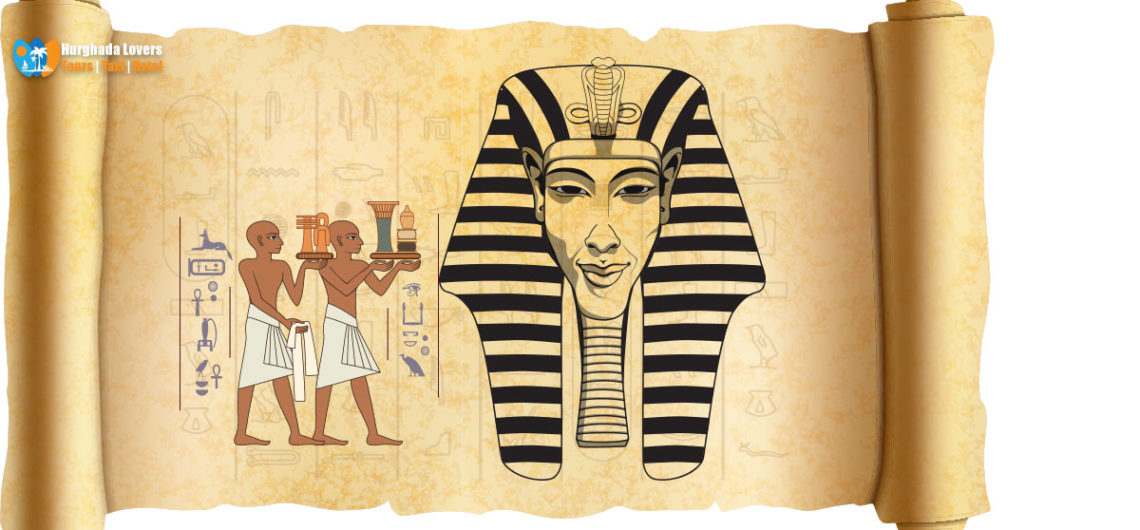Revolutions in Ancient Egypt timeline | Conflicts & Egyptian Revolution, History and Facts Rebellion in the Land of the Pharaohs and more about Ancient Egypt History.
The history and secrets of the 10 most important revolutions of the ancient Egyptian Pharaohs.
the facts and causes of the starving revolution and the workers’ revolution under the reign of King Ramses III and more for the most important features of the Pharaonic civilization.
Revolutions in Ancient Egypt
Ancient Egypt experienced social and political revolutions at the beginning of its history, and these revolutions can be classified as revolutions (social, economic, religious, liberal, political), and we will describe them all here in their historical sequence:
Revolutions in Ancient Egypt hungry revolution:
What caused the famine in ancient Egypt?
This happened after the collapse of the Old Kingdom, a poor-led social revolution in the First Intermediate Period after the collapse of the Old Kingdom, and it is likely that the era of King Pepi II from Sixth Dynasty of Egypt either paved the way for him, but it happened during the reign of king Merenre, who lost his life killing his subjects.
You can refer to the writings of Ipuwer Papyrus and The Eloquent Peasant story one of Ancient Egyptian Literature, Papyrus Harris I, Prophecy of Neferti, Papyrus despairing of life with his Ba and the Commandments of King Meryibre Khety “Meryibtawy” to his son Meri Ka Ra, The period of the Egyptian Pharaohs kings, the Tenth Dynasty of Egypt which are the sources of our knowledge of this revolution.
The revolution before the entry of the Hyksos:
This happened after the death of King Amenemhat III from Twelfth Dynasty of Egypt during Middle Kingdom, where the economic and political conditions of Egyptian society deteriorated and the independence of the regions and their princes emerged and the country disintegrated, and the entry of the Hyksos into Egypt was easy and no one resisted them because of this revolution and its troubles.
The revolution against the Hyksos and their expulsion:
This is the revolution led by King Seqenenre Tao at the time of Seventeenth Dynasty of Egypt and after his assassination by them in an honorable battle, his son King Kamose led the revolution and he was killed too, then King Ahmose I from Eighteenth Dynasty of Egypt during The New Kingdom took command of the revolution and managed to expel the Hyksos and catch up with their remains in Lebanon and establish the eighteenth dynasty that founded the Egyptian Empire again.
Revolutions in ancient Egypt, a good revolution against King Takelot I:
Our most important source is the 22-year-old Hoor Basin Stella “Twenty-second Dynasty of Egypt” Preserved in the Louvre Museum, found in Tomb of Serapeum in Saqqara, the military commander and elder priest of the God (Hor Heri Sha F), the god of Ehnassia, grandson of king Osorkon II at the end of the Twenty-second Dynasty of Egypt, as well as the anthoscopes of the high priest of Amun king Osorkon I, the son of the second spoke and the commander of his The army in ancient Egypt. Found on the walls of a gate in the Karnak Temple in Luxor.
The revolution took place when King Takelot I appointed his son king Osorkon II as the chief High Priest of Amun in Thebes, and his cousin Hor Sa Isset II incited good priests and their people against the king’s decision because he sought to be the priest after the death of his priest Nimrod, who could have been Babylonian?
During this, the Prince of Sais Tef Nekhet, who belongs to the 22nd Libyan dynasty and declared himself king and founded the Twenty-Fourth Dynasty of Egypt.
The workers’ revolution under King Ramses III:
King Ramses III is one of the most famous of the Twentieth Egyptian Dynasty, beginning with the The Ramesside Period, ruled Egypt for 30 years: the conditions of the poor classes deteriorated “Social Structure in Ancient Egypt“, so they revolted against him.
Most of the Egyptian people joined the revolution and the details of which were written on Papyrus, and the king tried to suppress the revolution in vain, and the king’s wife Queen Tyti had tried to inherit from the king to her son with the help of the palace guards, but she was caught and trialed and her son died of poisoning.
King Ramesses IV, who did not save the country but was under the authority of priests, was finally crowned. The events of this revolution were written on Harris’ papyrus, which means an important historical reference.
Revolutions in Ancient Egypt, King Akhenaton Religious Revolution
What did Akhenaten do to religion?
On the worship of God Amun “The Egyptian Gods” and the multiplicity of gods and his call to one God, the God of Heaven, earth and human beings, and his symbol by the disk of the sun (God Aton, Iten) and did not put him in a temple, it was an important religious revolution as in Ancient Egyptian religion
But he had politically weakened Egypt by virtue of King Akhenaton concern with his call and weak control over the parties of the empire. and its creation of a crack in the inherited religious and political system and Ancient Egyptian Government.
The revolution against the king (Wah Ib Ra, king Apries):
king Apries is the fifth king of Twenty-Sixth Dynasty of Egypt, and many sources, the most important of which are the Stella of king Amasis II, the writings of Herodotus and the painting of the two thousand.
The reason for this revolution was that the Libyans called him in their struggle against the Greek colonization of the Libyan coastal cities, and the king sent an army composed of Egyptians, who were not loyal to him to get rid of them, and kept the Greek Mercenaries as his guards, so that the Egyptian soldiers rebelled and captured the king.
The revolutions in ancient Egypt, the revolutions of the Egyptians against the Persians:
These are three successive revolutions, the first in 524 BC., commanded by the king Psamtik III from Late Period “Black Pharaohs” and which ended with his death. Then came the second revolution against the Persians led by King Petubastis III from Twenty-Seventh Dynasty of Egypt in (522-520) B.C. and declared himself king of Egypt of the desert of western Egypt.
Where he built a temple of the God Thoth. The third revolution is the Khabash revolution against the Persian invasion: a large-scale rebellion led by Senen Seth Sa Ptah in the years 343-333 B.C. against the Persians who occupied his country and established the 27th dynasty.
The Egyptian revolutions in the Ptolemaic period were:
- Revolution under Ptolemy IV (Philopator)in 207-206 BC.
- Revolution under King Ptolemy V (Epiphanes)
- Revolution under Ptolemy VIII (Euergetes)in 195-294 BC.
- Revolution under King Ptolemy IX Soter (Sotter II) in 90 BC.
Social revolutions in Ancient Egypt
Social revolutions weighed theirs in ancient Egypt; the revolutions were necessary to lift the injustice and corruption of the people and Law in Ancient Egypt and were taking place on a path that called for religious power not to be used as a power of social repression.
When the Egyptians wanted to express the meaning of freedom, they gave it the word “nafo”, which means “to breathe”, which thus links breathing to freedom, that is, air and life to freedom.
The idea of equality among the Egyptians was confirmed following the popular revolution by the Egyptians against the regime after the fall of the Old Kingdom at the end of the Sixth Dynasty (2140 BC); the regime of the time decided the right to “immortality” in the other world to kings and nobility alone, and this right was not prescribed to ordinary people.
The revolution, which historians consider to be the first public revolution in the history of the world, lasted more than a century, during which the country experienced political chaos until the era of the “Middle Kingdom” began in 2022 BC.
During this revolution, ordinary Egyptians demanded their right to eternal life in the other world, and they obtained this right, and all the monde became equal… in the other world or during the mortal life.
References Revolutions in Ancient Egypt: The Book of Egyptian Civilization, Egypt
Hurghada Lovers best Tour Operator to provide daily tours to visit the Tourist attractions of Luxor by Hurghada to Luxor Day Trips and Cairo by Hurghada to Pyramids Day Trips to discover the secrets. Book online when you come to Hurghada, El Gouna, Sahl Hashish, Makadi Bay, Soma Bay.


